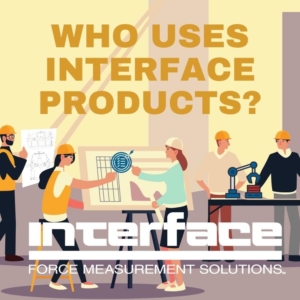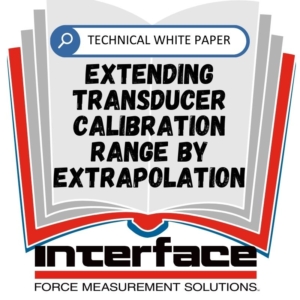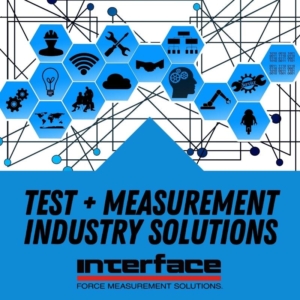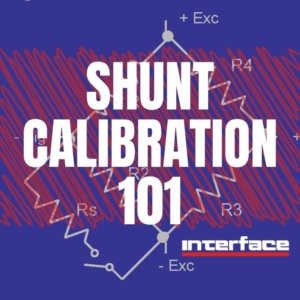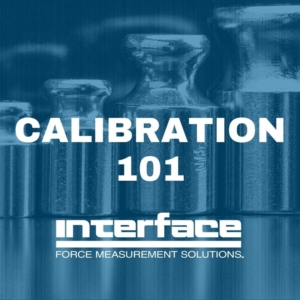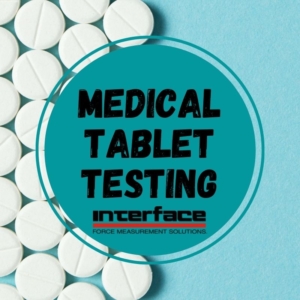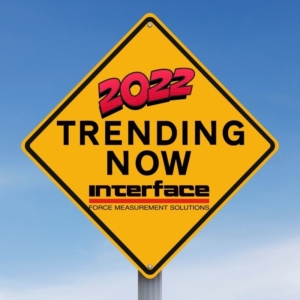 Interface continues to experience significant growth in demand and fulfillment of our precision measurement products and services. Despite the ongoing challenges in supply and overall health and economic concerns, our focus has remained steadfast to serve customers with innovative solutions, facilitated requests for specialized engineering and production requests and expeditiously working to meet the delivery schedules aligned to our customers’ requirements.
Interface continues to experience significant growth in demand and fulfillment of our precision measurement products and services. Despite the ongoing challenges in supply and overall health and economic concerns, our focus has remained steadfast to serve customers with innovative solutions, facilitated requests for specialized engineering and production requests and expeditiously working to meet the delivery schedules aligned to our customers’ requirements.
As the overall T&M industry grew, so did the demand for engineers and manufacturers across all industries to have proven solutions from their test and measurement equipment, expanded capabilities from sensor technologies, as well as explore new ways of optimizing products with real-time, accurate measurement.
As we look ahead to 2022, we are also investing in new and existing trends and exploring how they will shape the overall market next year and beyond. To help prepare our customers, here are our predictions for the new year, along with what is hot and trending in force measurement. The following provides some insights from our experts on how Interface is prepared to address these trends, while continuing to serve our customers at the highest level of satisfaction. Here is Interface’s viewpoint on market trends and predictions for 2022 and beyond.
Big Data Continues to Rule Product Design and Test
Over the last few years, we’ve shared our view on the Industry 4.0 revolution and how Interface customers are demanding more data from their T&M tools to give exactness in accuracy and all-encompassing performance data at the earliest phases of product design. Not only will this continue, but it will expand rapidly. In the force measurement world, Interface has responded by serving our customers with new innovations in multi-axis sensors that provide more force data on more axis. Interface offers a wide variety of multi-axis sensors including 2, 3 and 6-axis sensors. We certainly anticipate a continued growth in demand for multi-axis sensors as our product line expands to meet the requirements.
In addition, Interface is seeing more requests from manufacturers and product designers to embed sensors and measurement capabilities within their products. To enable continuous improvements and advancements in smart manufacturing and product designs, sensors are being used to provide real-time feedback on machines, components, equipment, and consumer products. These sensors are often designed in or embedded into the OEM product to predict the health in each type of use case, as well as notify users when a repair or adjustment is needed for safety, user satisfaction, and controlled maintenance. In the manufacturing applications, this capability significantly reduces facility downtime. To meet this demand, Interface is investing in more automation capabilities within our own manufacturing facilities to produce high volume sensor solutions for OEM customers. This market is growing rapidly, and Interface is working hard to meet the needs of our customers that need our products in volume.
New Advancements in Strain Gages
Another trend that Interface is actively investing in is new strain gage technologies and manufacturing techniques to better serve the high-production and OEM markets. Interface uses proprietary strain gages for all products we manufacture. When OEMs are making high-volume product orders and need sensors that fit their exact needs without breaking their budget, Interface is ready to meet the demand. One of the ways that force sensor manufacturers can meet OEM cost needs is through innovation in strain gages, the heart of any measurement device. Interface deploys a team of resources to design and build custom strain gages when a unique solution is part of the design requirements. Interface has expanded our specialization and expertise in mechanical engineering, chemical engineering, and metallurgy to meet this specific trend and need. We are currently undergoing critical R&D to find new ways to develop these components and working directly with customers to meet their data requirements. Check out this post on strain gages.
Growing Demand for Wireless Solutions
Another trend that is continuing to gain momentum is the growing need for wireless measurement solutions. Wireless systems are helping manufacturers simplify the integration process and create a cleaner safer test environment with far less wiring. Wireless communication is also playing a major role in advanced manufacturing and smart products. By connecting systems wirelessly, users can monitor testing and in OEM applications, review the health of a system, from a central point. This includes for components used in the field, underwater or via remote locations for assembly and test.
These wireless systems also help improve accuracy significantly. Wireless technology has gotten to the point where we can receive more accurate readings when converting from an analog to a digital signal. This is especially important in highly complex and regulated industries like aerospace, energy, or medical. Wireless solutions will continue to grow, and Interface continues to develop new wireless total system solutions for our various product lines.
Faster, More Efficient Calibration Services
One of the most critical facets of working in manufacturing and technology is meeting the demands of our clients in an extremely timely manner. Innovation, advancements and testing demands slows down for no one, and our customers are no exception. This also requires regular maintenance and servicing of our devices. Interface recommends annual calibration services to ensure your force and torque measurement products are performing as designed. We understand they need our products and services fast. As part of our commitment to customers, Interface provides high quality calibration services that are key to long lasting and accurate force sensors. This service has grown rapidly alongside the force measurement industry and we’re receiving more re-calibration orders than ever before. To meet this demand, Interface is investing heavily in both people and technology to further expedite this process and meet our promise of expeditious turnaround times for calibration services. Read more about calibration here.
Complete Systems
Sometimes out-of-the-box meets the exact requirements, sometimes it’s in the box. Interface continues to expand our product mix to include advanced instrumentation, accessories, sensors and unique housing for full systems due to growing demands. Our team of solution engineers partner with our customers to identify the specifications and understand the application to build completely custom solutions, from single sensors to complete systems. These systems can be used within lab testing environments or as remote testing solutions. Learn more about the capabilities of our custom solutions team here.
These are just a few of the many trends occurring in test and measurement into 2022 and beyond. Technology is progressing at a rapid pace. Our customers need more data, that’s abundant and accurate. Our sensors are seeing new application and use cases, ranging from testing unmanned space vehicles to smart agriculture components.
Rest assured, Interface is deeply invested in addressing these trends and serving our customers in the new year and beyond with critical innovation. It’s what we’ve been doing since 1968. We see an abundance of opportunities and possibilities in working with our customers to get the best products for their projects, programs, and OEM products. Whether they need our standard, engineered-to-order, and custom solutions, we are here to serve and ready for 2022. How can we help you?
Additional Resources
Interface Multi-Axis Sensor Market Research
Interface All-In-One Custom Test Systems
Additional Interface Calibration Grade Solutions
